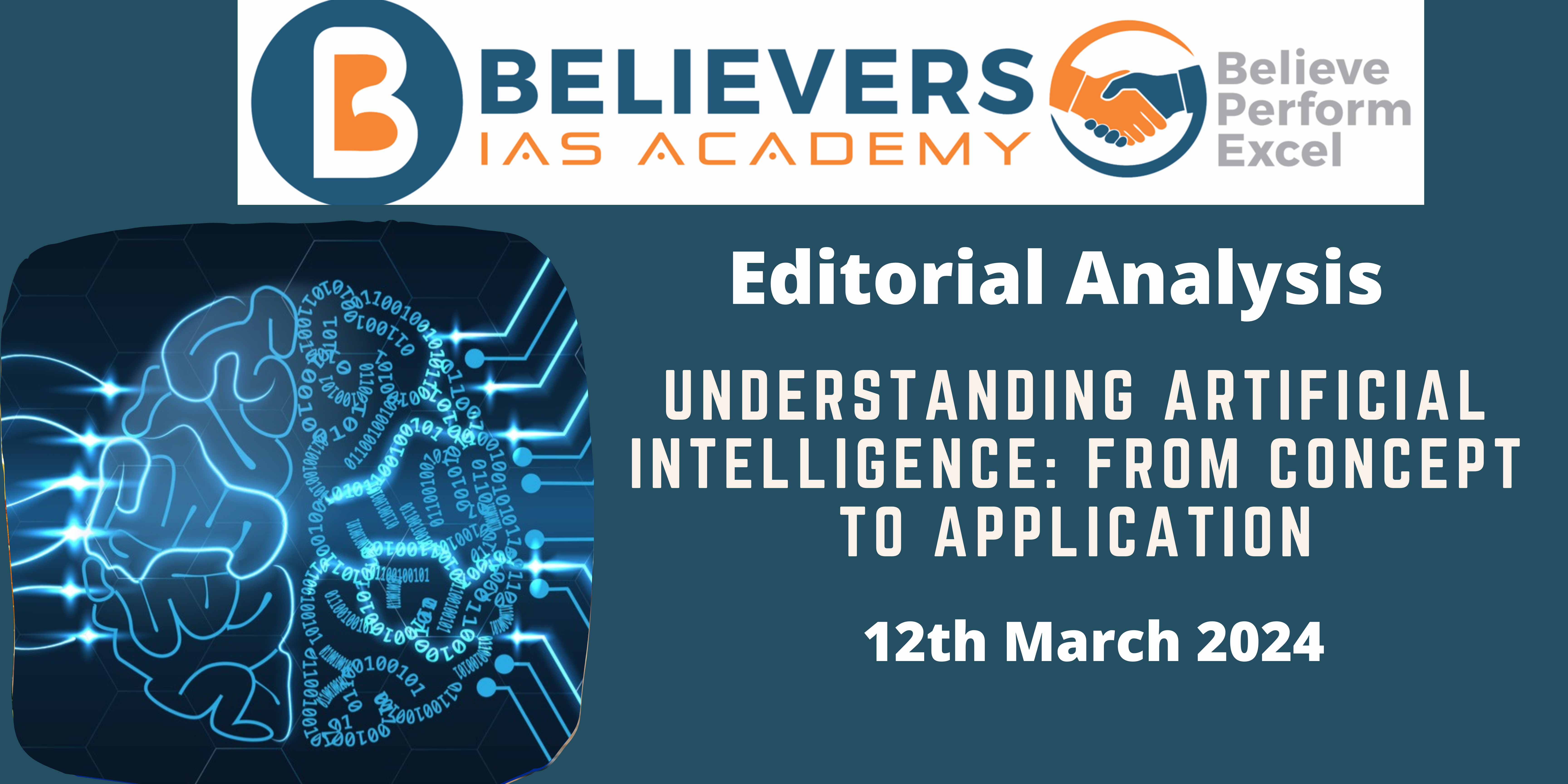Understanding Artificial Intelligence: From Concept to Application
Context:
In 2023, there have been remarkable strides in Artificial Intelligence (AI) innovation, demonstrating remarkable progress across a wide array of AI tools.
Relevance:
GS – 02 GS – 03 (Artificial Intelligence, IT & Computers, Government Policies & Interventions)
Prelims:
Machine Learning, Large Language Models, Global Partnership on Artificial Intelligence, Artificial Intelligence Mission
Mains Question:
Discuss the significance of artificial intelligence in solving complex problems and its underlying mechanisms, including machine learning algorithms and artificial neural networks. (150 words)
Key Highlights:
- Artificial intelligence (AI) is the replication of human-like intelligence in machines to solve problems.
- The process of AI involves various steps of thinking, from linear classification to complex decision-making.
- Machine learning algorithms, such as supervised learning, unsupervised learning, and reinforcement learning, play a crucial role in AI development.
- Artificial neural networks (ANNs) serve as the foundation for AI, mimicking the structure and function of the human brain.
- Nvidia’s dominance in GPU technology has significantly contributed to the advancement of AI research and development.
Dimensions of the Article:
- Understanding the Mechanisms of Artificial Intelligence
- Navigating the Steps of Thinking
- The Complexity of Decision-Making
- The World of Machine Learning
- The Inner Workings of Artificial Neural Networks
Understanding the Mechanisms of Artificial Intelligence:
- Artificial intelligence also known as AI, represents the culmination of efforts to replicate human-like intelligence in machines.
- AI at its core encompasses the ability of machines to apply acquired knowledge to solve complex problems.
- While there is no universally accepted definition of AI, it is commonly understood as the intelligence exhibited by machines, as opposed to natural intelligence displayed by humans and other living organisms.
Navigating the Steps of Thinking:
- The journey towards achieving artificial intelligence involves various stages of thinking, ranging from simple linear classification to intricate decision-making processes.
- Linear classification, for instance, entails the segregation of data points into distinct groups based on specific criteria, such as plotting points on a graph and drawing a straight line to separate them.
- This elementary example underscores the fundamental principles of AI and sets the stage for more sophisticated applications.
The Complexity of Decision-Making:
- While some problems lend themselves to straightforward solutions, others pose significant challenges that require nuanced decision-making.
- For instance, determining whether a driverless car should apply the brake based on the speed of a bird flying in front of it involves evaluating multiple parameters and contextual factors.
- This highlights the intricacies involved in decision-making processes and underscores the need for advanced AI algorithms to navigate complex scenarios effectively.
The World of Machine Learning:
- Machine learning serves as the backbone of AI, enabling machines to learn from data and improve their performance over time.
- Three primary approaches to machine learning—supervised learning, unsupervised learning, and reinforcement learning—offer distinct methodologies for training machines to process information and make informed decisions.
- Supervised learning involves providing labeled data to train machines, while unsupervised learning tasks machines with organizing and analyzing unlabeled data. Reinforcement learning, on the other hand, utilizes feedback mechanisms to refine machine behavior based on outcomes.
The Inner Workings of Artificial Neural Networks:
- At the heart of AI lies Artificial Neural Networks (ANNs), computational models inspired by the structure and function of the human brain.
- ANNs consist of interconnected nodes that mimic neurons, with each node performing computational tasks and transmitting information to subsequent nodes.
- Activation functions and weights govern the flow of information within ANNs, allowing machines to process data and generate meaningful outputs.
- By leveraging ANNs, researchers can simulate complex cognitive processes and develop advanced AI systems capable of solving a wide range of problems.
Conclusion:
As artificial intelligence continues to evolve, it holds immense potential to revolutionize industries, enhance human productivity, and address complex challenges facing society. By leveraging the principles of machine learning, artificial neural networks, and innovative technologies like GPUs, researchers can unlock new possibilities in AI research and application.




